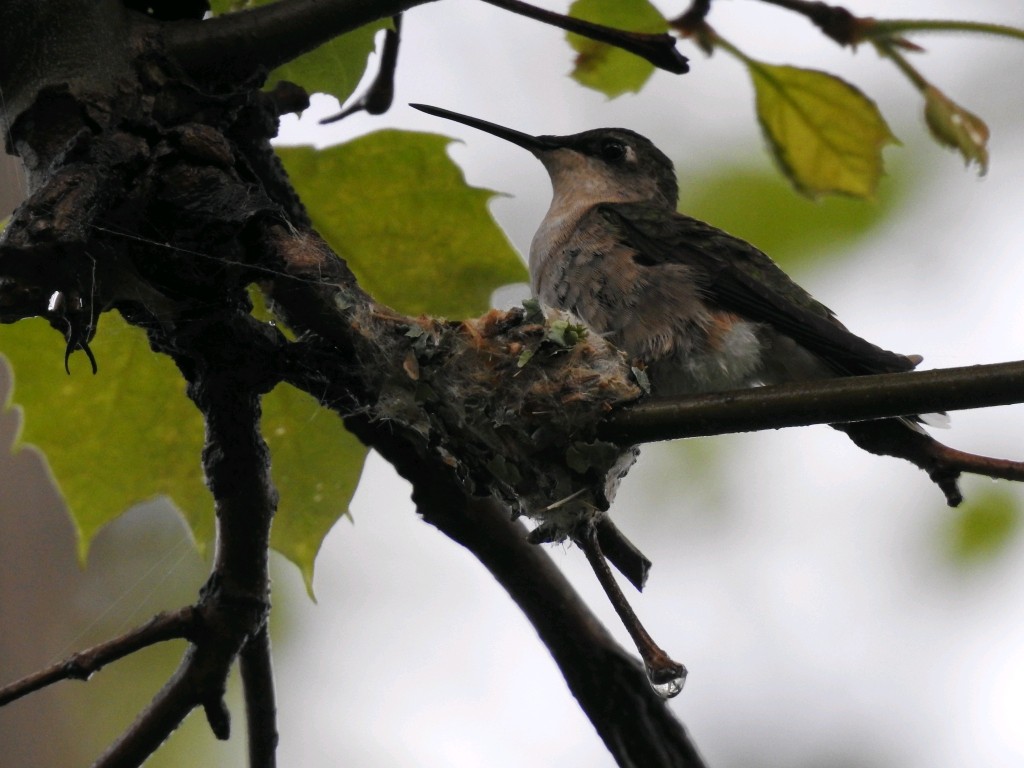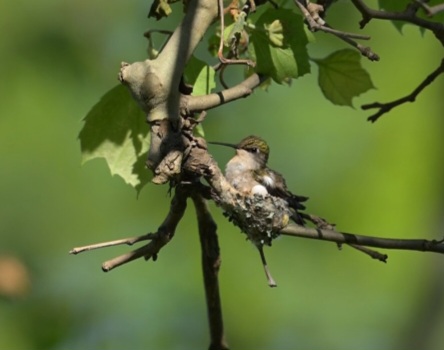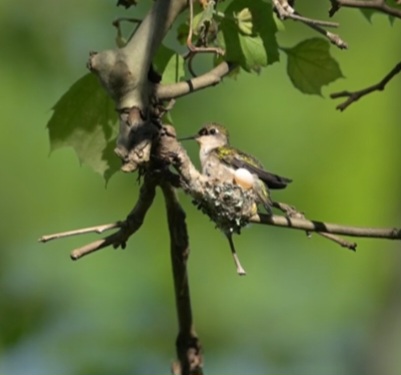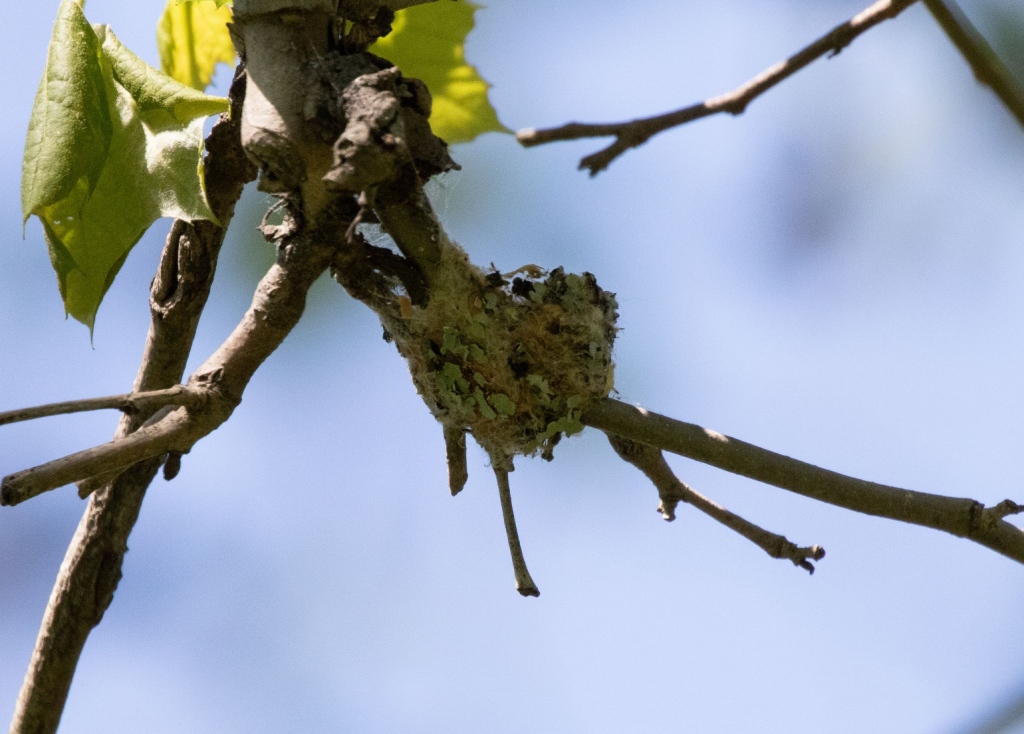Leonard Weber
May 19, 2024
Ruby-throated Hummingbirds nest in Eliza Howell Park, probably every year, but finding a hummingbird nest is not easy and happens rarely.
Earlier this month of May, as we were preparing for the next session of the BIRDS NESTING field course, one of my colleagues spotted a female hummingbird in an American Sycamore tree. It flew away, but returned to the same spot almost immediately. There was not much to see yet, but we were seeing the beginning of hummingbird nest. It was being constructed on a small limb about 15 feet high, not hidden by leaves and close to the path, an excellent location for observation.
The next day (Day 2), she was working energetically on the nest during each observation.

A nest is made of small pieces of plant material, including down, and is bound together by spider webs. The outside is coated with flakes of lichen.

I used the word “she” above because the male Ruby-throated Hummingbird does not participate in making the nest (or in incubation or in feeding the hatchlings); everything is done by the female alone. The male can often be seen perched in a tree, moving from one lookout spot to another, keeping watch over his territory.
The next photo is from a previous year.

On Day 3, the nesting course participants (and a few others) had an opportunity to watch as the hummingbird continued nest construction. The nest was larger and more solid looking, but still quite small.

Based on field guides that I had consulted, I expected the nest to be complete after about 5 or 6 days. My personal experience was limited to one nest located in the park some years ago. I anticipated that the finished nest would look like this.

Photo courtesy of Margaret Weber
Because I thought the nest was not nearly at the “move in” stage, I was surprised to be informed on Day 4 by another colleague that the hummingbird had been on the nest that morning and had, in fact, already laid an egg.
The report also included the news that the egg was lost, fallen from the nest.
He later sent images.


Shortly after the egg fell from the nest, the bird flew away. Hummingbirds normally have two eggs per clutch, so the question was whether the mother would return, lay another egg, and continue with this nest.
The answer turned out to be no. She was last seen on Day 4. This is now Day 11. To my knowledge, no one has seen her at the nest or in the Sycamore tree in a week.
The tiny empty nest is a reminder that nesting attempts are quite often unsuccessful.

photo courtesy of Margaret Weber
Ruby-throated Hummingbirds often have two broods a year — making a different nest for each. My expectation is that this female will start over soon, but the chances are very good that we will not know what happens next. Locating another nest this year is unlikely.
It was both a great and a sad nest-watching experience: exciting to watch a hummingbird at work on a nest and disappointing that the observations were so limited.
It was one of nature’s short-lived gifts.
Leave a comment